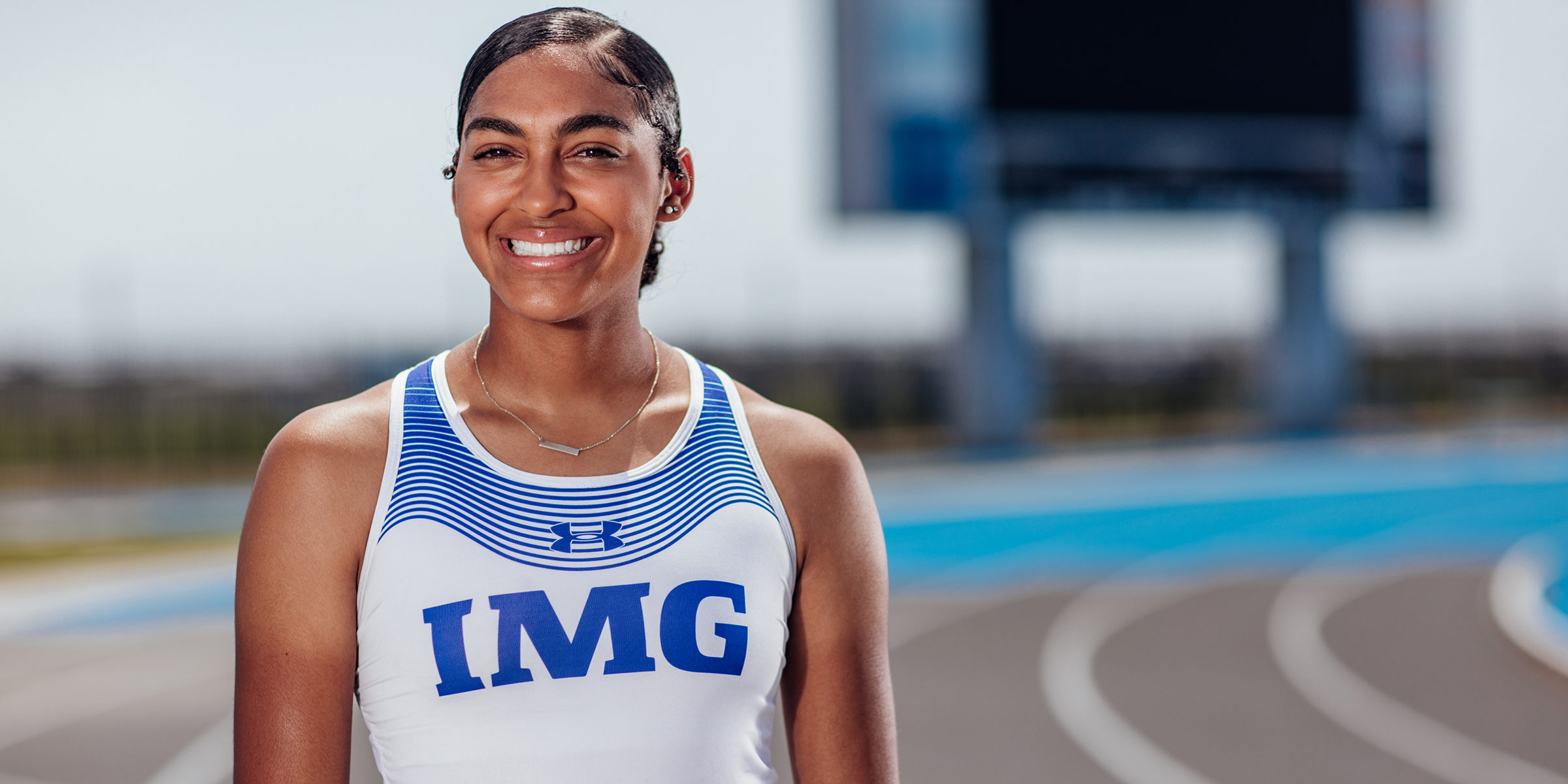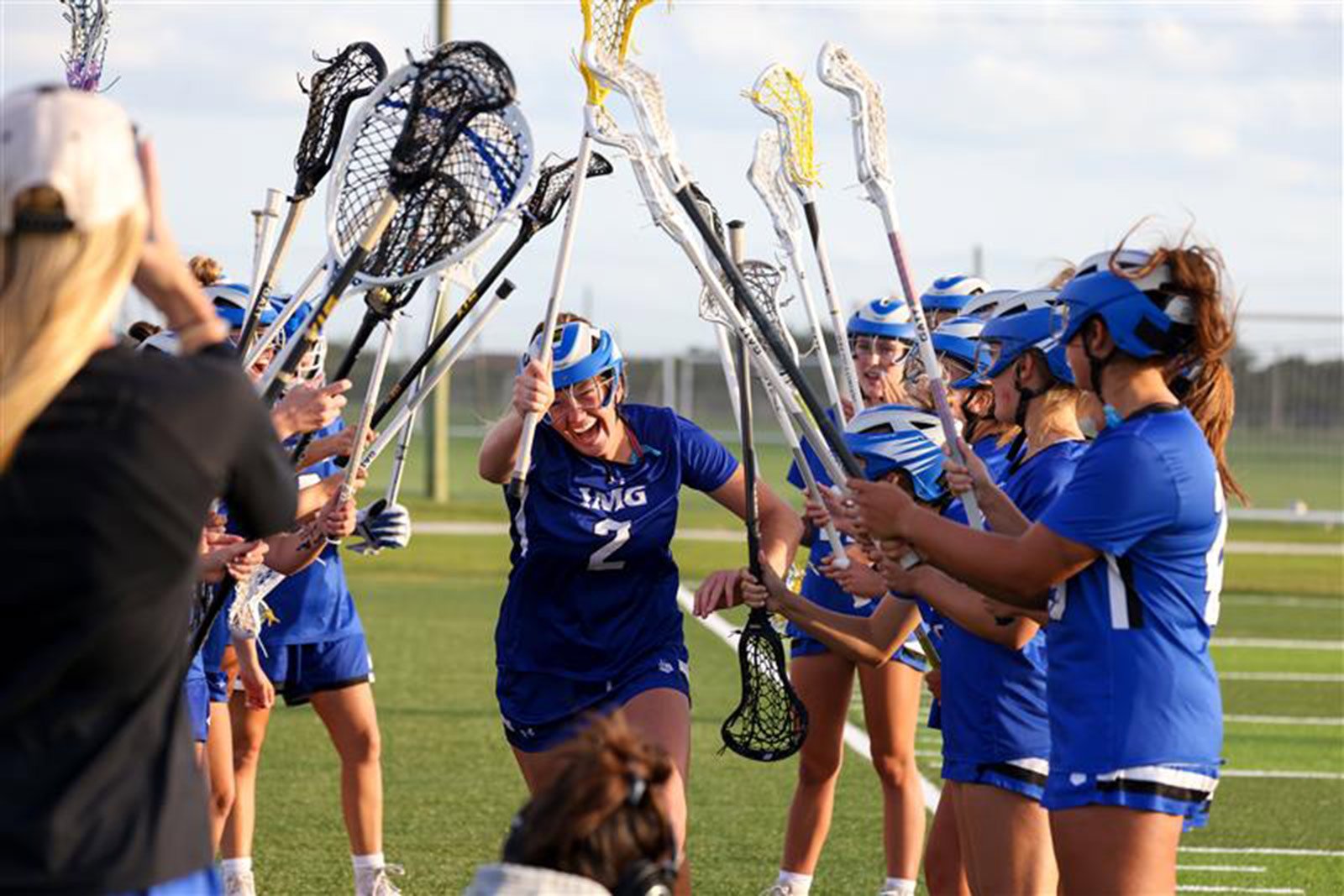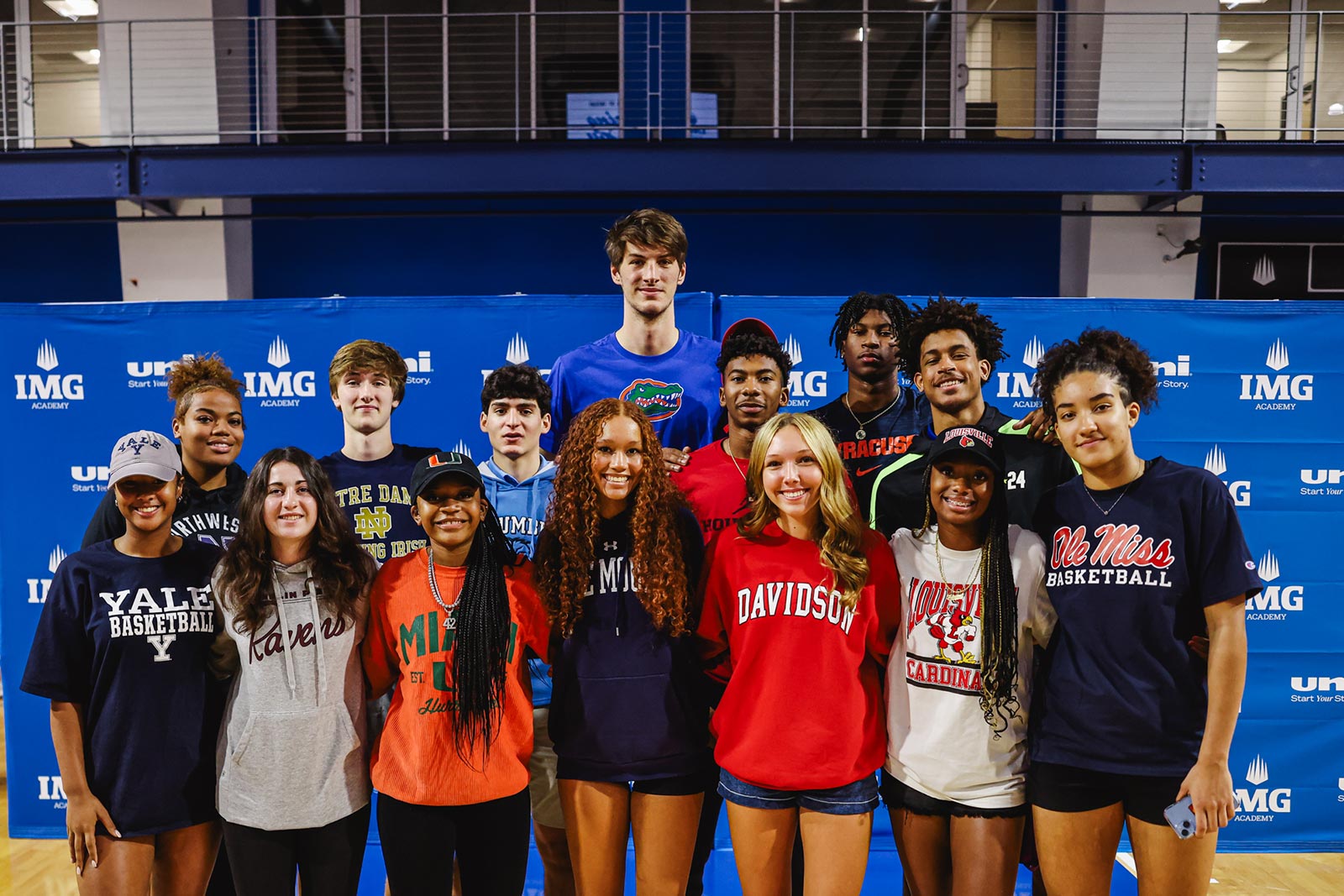Chat with us
9 a.m. - 7:00 p.m. EST
Enter camper details to start the camp registration process and to view available camp dates and pricing
By clicking Submit you agree to and have read our privacy policy: Privacy Policy
The college sports landscape is facing a new era following the recent settlement of the anti-trust lawsuitHouse v. NCAA and the changing economy of college sports. Over the next few months and years there will be massive changes in college sports including the introduction of direct athlete compensation from schools and the continued evolution of NIL (Name, Image, Likeness). While much of what is happening in college sports is good for student-athletes, the one clear negative is the threat of roster and team reductions to Olympic sports. It doesn’t have to be that way.
This is a tipping point. A few voices can tip this in the right direction.Brent Richard
CEO, IMG Academy
8M → 0.5M
There are approximately 8 million youth athletes vying for approximately 500,000 college roster spots.
92%
of families are considering college athletics*
52%
would consider playing in absence of a scholarship*
57%
expressed interest in a “varsity/JV-lite” model*
*Based on an internal survey completed by 769 families

College sports face a tipping point — one that impacts millions of future student-athletes. On the heels of the recent House v. NCAA settlement, universities must grapple with an evolving economic model for sports. The knee-jerk reaction too often is to consider reducing rosters and teams.
It doesn’t have to be this way.
Read Full Article
The problem to solve: Higher education needs a new framework that upholds amateur sports' educational and community-building value, while celebrating and adjusting to a world where several sports (primarily football and basketball) in top collegiate athletic conferences are generating significant entertainment-driven revenue for universities. These are new and interesting opportunities and challenges for universities to solve; the problem emerges when conversations turn to cutting students and teams.
Read Full Article
The House v. NCAA settlement changes college sports with $2.8B in payouts and future revenue sharing. Starting 2025, schools can share up to $20.5M/year with athletes. IMG Academy leads in preparing student-athletes through NIL education, financial literacy, and brand building, helping families navigate this new era with guidance and support.
Read Full Article
The first model is “One for the Few,” and it encompasses professional sports economics and self-funded, revenue-generating entertainment sports. The second is “One for the Many,” and it includes scalable and profitable models that rely on education revenue streams, primarily tuition, institutionally governed Olympic sports programs that expand access, and are sustainably funded by a blend of tuition-paying and scholarship student athletes.
Read Full ArticleThe mission of college athletics is education through sport. Our north star (at the American Conference) is to create the maximum number of opportunities for young people to go to college, compete in athletics and earn a degree all while learning invaluable life skills that will prepare them to win their future.Tim Pernetti
Commissioner, American Conference
Sports represent foundational education and advancement opportunities in our society, and we should be seeking to open up more opportunity in college and beyond.Tom Farrey
Founder & Executive Director, Aspen Institute's Sports & Society Program
The value of a roster spot has increased exponentially with more opportunities for student-athletes to earn direct payments from schools and NIL. But with the financial pressures of the changes, universities are faced with pressure to maximize resources to traditional revenue sports – which could leave thousands of student-athletes in hundreds of programs facing cuts unnecessarily.
At IMG Academy, we believe that increasing opportunities for all student-athletes is good for business and we have a plan – but we urgently need you to spread the word. Email your student-athlete or your alumni’s athletic director, university president and board of trustees and tell them that cutting opportunities for student-athletes isn’t acceptable.
Will universities add or subtract in this moment of generational change? Together, we have experience and relationships that – IF activated – can tip conversation. Let’s keep pushing and advocating on behalf of student-athletes everywhere.Brent Richard
CEO, IMG Academy
Contact state representatives, your alma mater, or any university president, athletic director, admissions department or others in power at a university.
SUBJECT LINE: A Strategic Opportunity to Grow College Athletics #AddMoreAthletes
Dear [Insert Name],
I’m reaching out as someone who believes athletic opportunities change lives – and that youth athletes need a viable future. With college sports on the cusp of transformation, that belief has never been more urgent.
With the House v. NCAA settlement reshaping the college sports landscape, universities are facing pivotal decisions. Some may consider cutting programs or reducing rosters. But there’s another path: using this moment to add student-athletes, grow Olympic and non-revenue sports, and expand the role athletics can play in higher education. I wanted to share two resources that lay out this vision:
These pieces present a strategic and sustainable case for growth – one that mirrors elements of the IMG Academy model: holistic development, gender equity, operational efficiency, and a commitment to serving a wider range of athletes. In a survey completed by nearly 800 parents, some notable results:
If this perspective resonates with you, I encourage you to bring it into your circles among trustees, athletics departments, campus leadership, and others who help shape the future of college sports. So much of what’s changing in college athletics – NIL, revenue sharing, enhanced benefits – is good. But the one real threat is program and roster reduction. It doesn’t have to be that way.
Thank you for the role you play in advancing student-athlete opportunities. Let’s keep pushing toward a future that includes more athletes, not fewer.
Sincerely,
[Your Full Name]
[Optional: Graduation Year, Sport, Role]
#AddMoreAthletes
#AddMoreAthletes
Help share the message on your social media accounts - you can post your own story, why college sports matters to you or re-post from IMG Academy's official Instagram account. Make sure to include the call to action and a link back to this page.
Go here to download templates to post and suggested captions
The IMG Academy Foundation (501c3) empowers the next generation of student-athletes to have access to world-class sports education. Donate to the IMG Academy Foundation’s #AddMoreAthletes Fund to support ongoing efforts to provide more opportunities for student-athletes to continue playing sports in college.
Donate HereHouse v. NCAA is an antitrust case alleging the NCAA and its member schools illegally prevented student-athletes from earning money through their name, image, and likeness (NIL). The resulting settlement provides:
Possibly, but it depends on the school. Starting July 1, 2025, institutions can choose to distribute up to $20.5 million annually among their student-athletes, with that amount projected to rise about 4% per year.
More changes are expected. This settlement is only a first step, and many specifics remain unsettled. Additional legal challenges are also likely:
The agreement applies to all Division I student-athletes who:
This includes current middle school, high school, and postgraduate athletes who aim to play Division I sports.
If a school reduced roster spots to prepare for the settlement:
This agreement represents a fundamental transformation in college athletics:
While the full impact is still developing, there are key concerns:
If you’re a parent, athlete, coach, alumnus, or supporter of IMG Academy, you can help shape the future of college sports:
9 a.m. - 7:00 p.m. EST